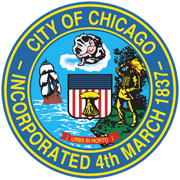Chicago’s Water is High Quality
Chicago has an excellent water source: Lake Michigan. The safety and quality of Chicago’s tap water is our top priority, and the Chicago Department of Water Management (DWM) continually monitors water quality and performs testing 24 hours a day, seven days a week. Chicago’s water meets or exceeds all standards set by the U.S. Environmental Protection Agency (EPA), Illinois EPA and the drinking water industry and passed its most recent review last month.
Children’s Lead Levels Drop Dramatically in Past 20 Years
The most important way to understand the health impacts of lead is to measure the level found in children. Chicago has achieved significant success in reducing the percentage of children with elevated blood lead levels in recent years.
Today, less than one percent of children have elevated blood lead levels, as compared to 25 percent in the late 1990s. Additionally, since 2016, CDPH has offered water testing when conducting inspections for children with elevated lead levels. Of those tested, no child with an elevated blood level lived in a home where the water had lead levels at or above the EPA action level.
The cause of elevated blood lead levels in children is usually linked to exposure to and ingestion of lead-based paint.
Proactive Approach to Ensuring Water Quality for Future Generations
Chicago has always been a leader in water quality research. In 2016, DWM launched a first-of-its-kind study to determine the possible impact of water main construction and meter installation on water quality. This is groundbreaking research, as there is no comprehensive scientific study that explores the possible impact of water main construction or water meter installation on water quality. The sampling approach taken in the study is more rigorous than the methodology used for EPA testing – the study collects multiple samples and is more likely to detect lead.
While the study is ongoing, preliminary data indicates that:
- The water main replacement program is not producing large changes in lead concentrations; the percentage of homes tested before and after main construction remained below the Lead and Copper Rule standard.
- According to this preliminary data, water meter installation may have raised lead levels in 51 homes of the 296 homes in the study that have before and after samples. More than 80 percent of the homes studied did not have lead levels above the EPA action level after the installation of a meter.
More study is needed to analyze the relationship between water meter installation and lead levels, as the increase may not be related to the meter. For example, these homes may have higher lead levels because of low water usage, which would mean the protective phosphate coating isn’t sufficiently covering the home’s lead service lines and internal plumbing systems and preventing that lead from entering the water.
History of Lead Service Lines
Many older single family and two-flat homes built before 1986 are likely to have lead service lines connecting the individual home to the water main. These older homes may also have lead solder and older interior household plumbing containing lead.
Chicago, like other cities, has an aggressive anti-corrosion program in which blended phosphate is added to the water. The phosphate forms a protective coating on the pipes from the treatment facility to the faucet, minimizing the risk that lead and other contaminants will leach into the water.
Next Steps
Although further study is needed, the city will proactively take a number of actions out of an abundance of caution:
Homeowners’ Lead Service Lines
- To address one of the primary causes of lead in water – lead service lines – DWM is working to determine the feasibility and framework of a multi-billion dollar program to potentially replace lead service lines. Other key causes are low water usage, fixtures and plumbing in the home.
- DWM has engaged CDM Smith, a global engineering firm, to evaluate the total cost and multiple factors involved in replacing lead service lines, including developing a step-by-step phased replacement program, reviewing industry practices, investigating available technology and assessing funding options, including potential federal and state funding sources. Should the recommendations be adopted, Chicago would become the largest city in the nation to address this legacy infrastructure issue.
Water Meters
- The city will provide water filters free of charge to any household that previously tested above the EPA action level. Previous testing has been conducted through the water quality study, 3-1-1 testing, EPA and CDPH testing programs.
- Starting with the most recent meter installations, the city will notify metered homes of the preliminary data. These metered homes may request a water filter set free of charge.
- Going forward, residents who request a water meter must provide informed consent and enroll in before and after testing to receive the meter. These residents will also receive a free water filter when their meter is installed since test results will not be instantaneously available.
Ongoing Free Water Quality Testing for Residents
Any Chicago resident can have a free test for lead or other particles.
Residents can call 3-1-1 to request free water testing at their address. Residents are notified about their individual results, and data from all homes is posted online at www.chicagowaterquality.org, with identifying information removed.
Residents who are concerned about lead levels are also encouraged to continue to flush, or run their water continuously for at least five minutes, before consuming water. Studies show that in almost every case, flushing remains an effective approach to lowering lead levels and exposure. Ways to flush include showering, as well as washing clothes and dishes.

